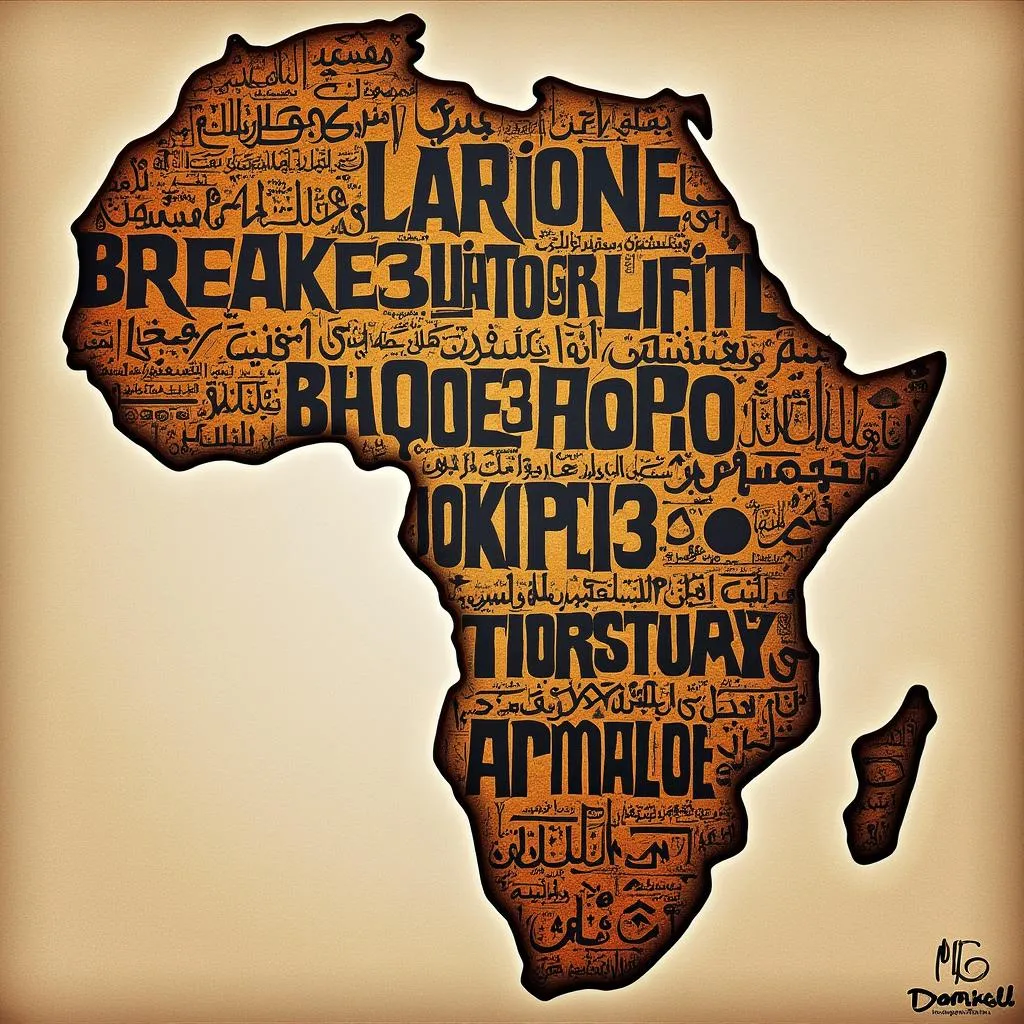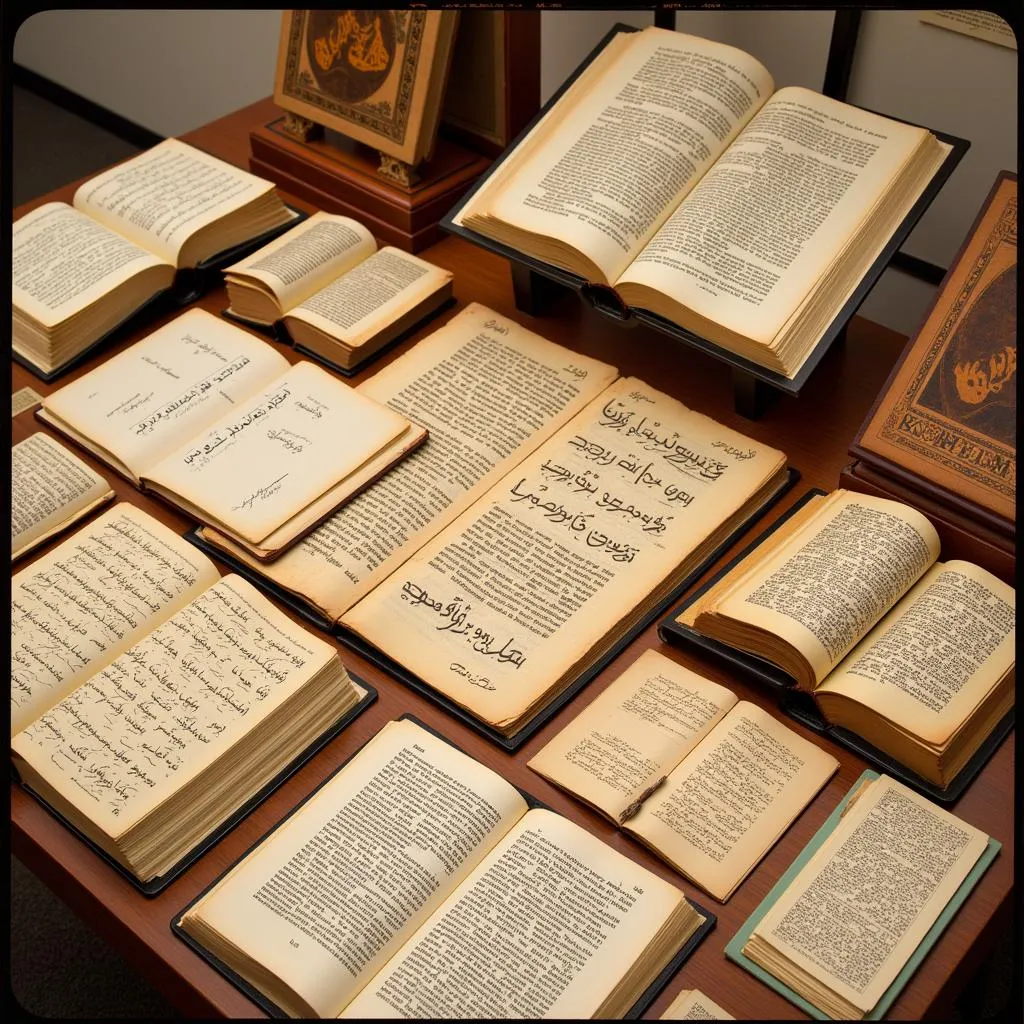Unveiling the Diversity of the African Language Alphabet
The African continent boasts an incredible linguistic tapestry, with an estimated 2,000 languages spoken across its diverse regions. While the concept of an “African Language Alphabet” might seem simplistic considering this vast linguistic diversity, exploring the writing systems used to transcribe these languages reveals fascinating insights into the continent’s cultural heritage and the evolution of written communication in Africa.
 Diverse African Language Scripts
Diverse African Language Scripts
From Ancient Symbols to Modern Scripts: A Historical Overview
The history of written language in Africa stretches back millennia, with evidence of ancient scripts like the Proto-Saharan and Meroitic scripts predating the arrival of major world religions and colonial influences. These early systems, often found in rock art and inscriptions, provide glimpses into the lives and beliefs of ancient African civilizations.
The introduction of Arabic alongside Islam brought about a significant linguistic shift, particularly in North and East Africa. Arabic script became widely adopted, leading to the development of notable written traditions in languages like Swahili, Hausa, and Fulani. The influence of Arabic is evident in the adapted alphabets used for these languages, featuring unique characters and diacritical marks to represent sounds specific to each language. For example, in African Eastern Oman, Arabic has had a significant impact on the languages spoken.
The Colonial Legacy and the Rise of Latin-Based Alphabets
The arrival of European colonial powers in the 19th and 20th centuries brought about another major shift in the African linguistic landscape. Colonial languages like English, French, Portuguese, and German became official languages in many countries, influencing education systems and administrative practices. This led to the widespread adoption of Latin-based alphabets for many African languages, often with modifications and additional characters to accommodate unique phonetic features.
 African Language Books and Manuscripts
African Language Books and Manuscripts
The use of Latin-based alphabets, while facilitating communication with the Western world, also presented challenges. Adapting existing alphabets to capture the nuances of tonal languages and distinct phonetic structures proved complex. This led to the development of specialized orthographies and the inclusion of diacritical marks to represent tones, vowel length, and other features. For instance, the African language Wolof utilizes a Latin-based alphabet with unique diacritical marks.
Diversity and Challenges in Contemporary African Alphabets
Today, the majority of written African languages utilize either Latin-based or Arabic-influenced alphabets. However, several indigenous scripts, like the N’Ko alphabet used for Mande languages in West Africa, continue to thrive and experience a resurgence in popularity. Additionally, efforts are underway to revitalize and promote the use of previously marginalized scripts, reflecting a growing awareness of the importance of linguistic diversity and cultural preservation.
Despite these positive developments, challenges remain. Standardization of orthographies, particularly for languages with multiple dialects, continues to be a complex issue. Limited resources for language development and education further hinder efforts to promote literacy in indigenous African languages.
Navigating the World of African Language Alphabets
For those interested in delving into the world of African language alphabets, several resources provide valuable insights:
- Online language databases and dictionaries: Websites like Omniglot and Ethnologue offer comprehensive information on African languages, including details about their writing systems and alphabets.
- Academic journals and publications: Scholarly articles and books explore the history, development, and challenges associated with African language alphabets in-depth.
- Cultural institutions and language centers: Museums, libraries, and universities often house collections of African manuscripts and resources for language learning.
Learning even a few basic phrases in an African language can enhance one’s understanding of the continent’s rich cultural heritage. The African ABC can be a good place to start. Moreover, supporting organizations working to preserve and promote African languages contributes to the ongoing effort to safeguard these invaluable cultural treasures.
Conclusion: Celebrating Linguistic Diversity in Africa and Beyond
The diversity of African language alphabets reflects the continent’s rich cultural heritage and the enduring legacy of its linguistic tapestry. From ancient symbols to modern scripts, these writing systems provide a window into the evolution of communication and the resilience of African languages. By exploring and appreciating the unique features of these alphabets, we gain a deeper understanding of the continent’s cultural richness and the importance of preserving linguistic diversity for generations to come.
FAQ
1. How many African countries are there?
There are 54 recognized countries in Africa. To learn more about the countries, you can check out this resource on North African countries.
2. What is the most spoken language in Africa?
Arabic, Swahili, and Hausa are among the most widely spoken languages in Africa, alongside various regional languages.
3. Are there any indigenous African writing systems still in use today?
Yes, several indigenous African scripts, such as the N’Ko alphabet used for Mande languages, are still actively used today.
4. Why are there so many different alphabets used for African languages?
The diversity of African language alphabets reflects the continent’s complex history, influenced by factors like ancient civilizations, the spread of Islam, and European colonialism.
5. How can I learn more about specific African language alphabets?
Online language databases, academic journals, cultural institutions, and language learning resources offer valuable information about specific African language alphabets.
Need Help?
For further assistance or inquiries about African languages and culture, please don’t hesitate to contact us:
- Phone: +255768904061
- Email: kaka.mag@gmail.com
- Address: Mbarali DC Mawindi, Kangaga, Tanzania
Our dedicated customer support team is available 24/7 to assist you.

